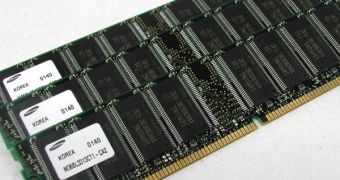World's largest memory chip providers, Samsung and Hynix, announced that they will collaborate for achieving the next generation of semiconductors. Both chip manufacturing companies will invest a share of $9.46 million, as part of a South Korean research and development program that is backed by the South Korean government and the Ministry of Commerce, Industry and Energy.
According to the Ministry of Commerce, Industry and Energy, this investment is more than an educational or a research initiative. It is primarily aimed at helping South Korean firms to fend off the Japanese challenge and the rivals in the next generation memory market.
This kind of market is based on commodities, meaning that the memory chip manufacturers are charging only a few cents above the production costs for each sold chip. The profits are made through volume sales and not through higher selling prices.
Such markets are prone to frequent crashes out of the blue. Moreover, huge profits can only be achieved by the companies who are fast enough to deliver the firs working units of newer technology. After the market is saturated by multiple players offering the same product, the companies are less likely to post profit.
The program will run for seven years and will help South Korea design and produce spin torque transfer magnetic random access memory (STT-MRAM) as well as some other non-volatile memory devices. The South Korean government has announced that it will invest 28.45 billion won in order to use the new technologies for snatching 40 percent of the non-volatile memory chip market until 2012.
As for the technological aspects, the new memory type will play a significant role in the flash memory development, by helping researchers to overcome the nowadays' current capacity limits. At the same time, the initiative is extremely important, as Japan's Toshiba, NEC and Fujitsu have signed an agreement too in order to jointly develop STT-MRAM devices.

 14 DAY TRIAL //
14 DAY TRIAL //